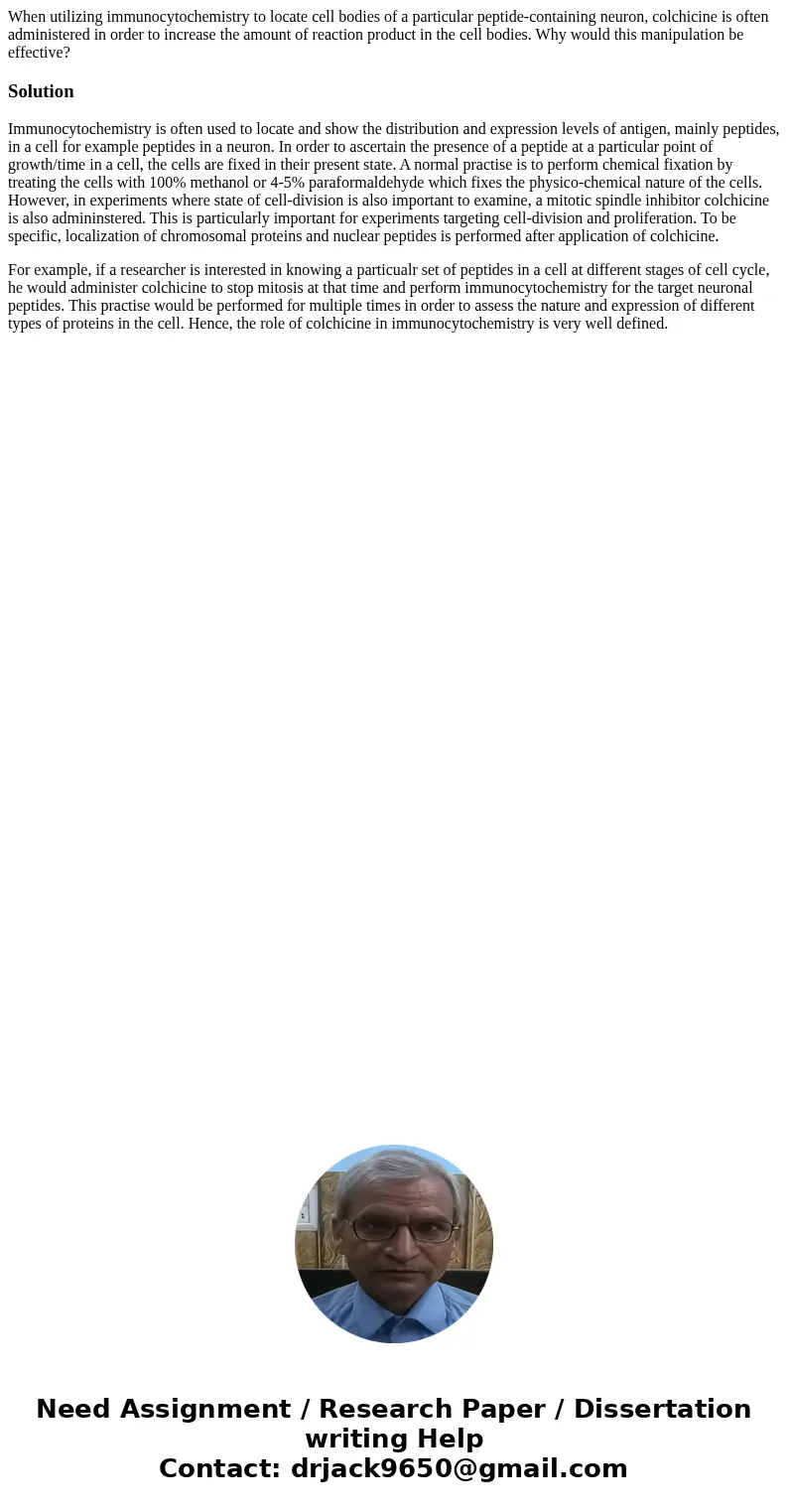When utilizing immunocytochemistry to locate cell bodies of
Solution
Immunocytochemistry is often used to locate and show the distribution and expression levels of antigen, mainly peptides, in a cell for example peptides in a neuron. In order to ascertain the presence of a peptide at a particular point of growth/time in a cell, the cells are fixed in their present state. A normal practise is to perform chemical fixation by treating the cells with 100% methanol or 4-5% paraformaldehyde which fixes the physico-chemical nature of the cells. However, in experiments where state of cell-division is also important to examine, a mitotic spindle inhibitor colchicine is also admininstered. This is particularly important for experiments targeting cell-division and proliferation. To be specific, localization of chromosomal proteins and nuclear peptides is performed after application of colchicine.
For example, if a researcher is interested in knowing a particualr set of peptides in a cell at different stages of cell cycle, he would administer colchicine to stop mitosis at that time and perform immunocytochemistry for the target neuronal peptides. This practise would be performed for multiple times in order to assess the nature and expression of different types of proteins in the cell. Hence, the role of colchicine in immunocytochemistry is very well defined.

 Homework Sourse
Homework Sourse